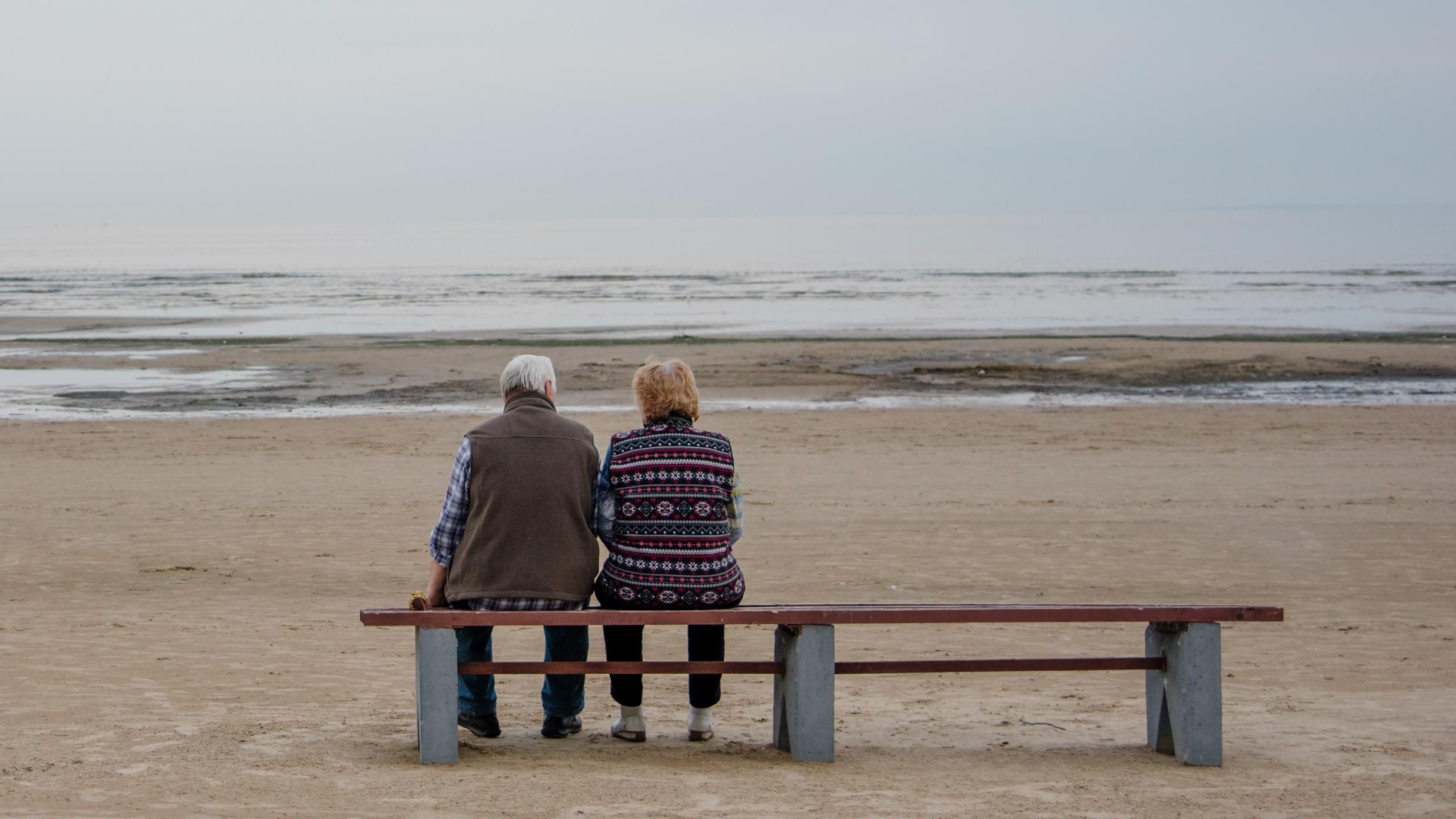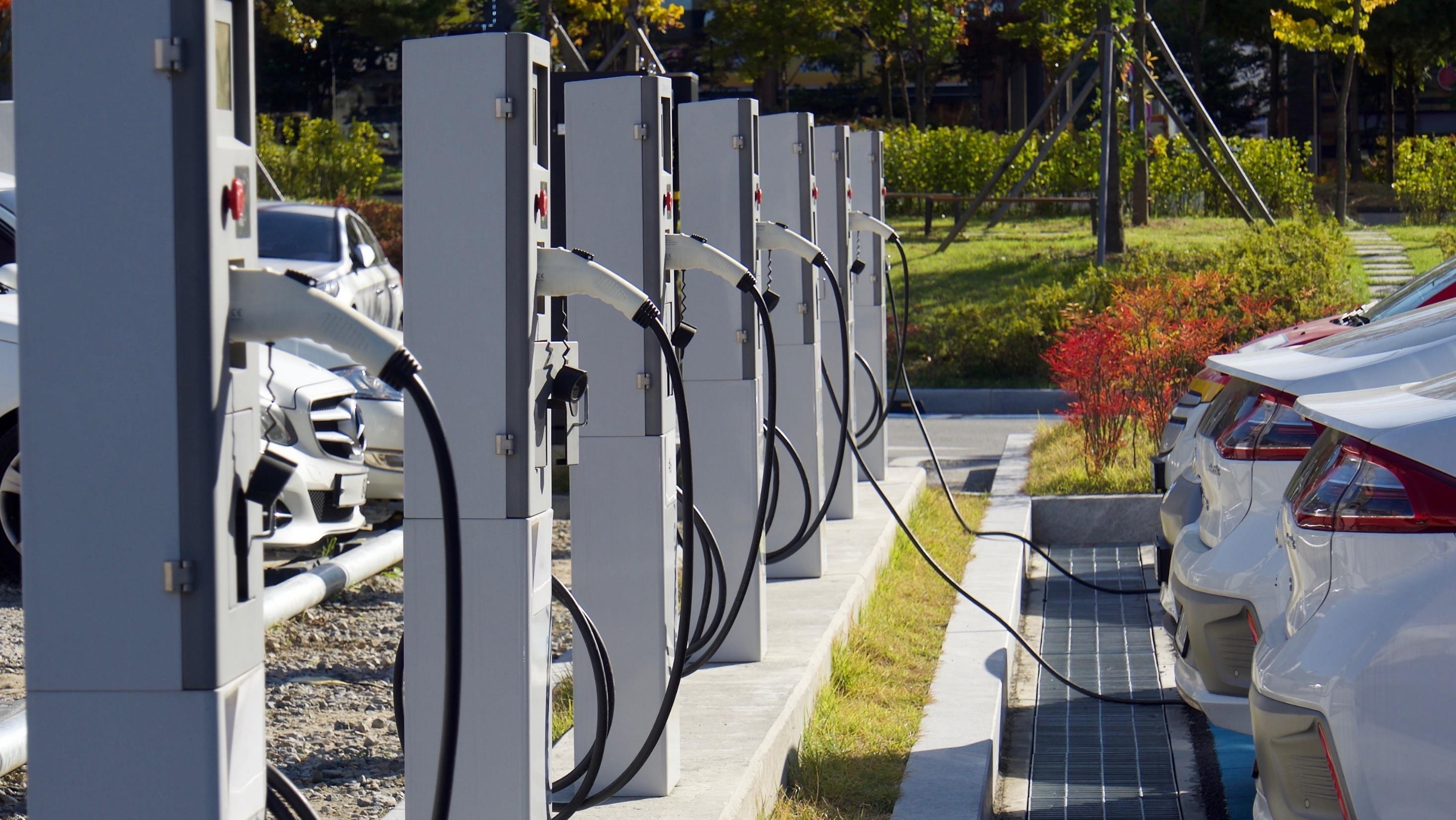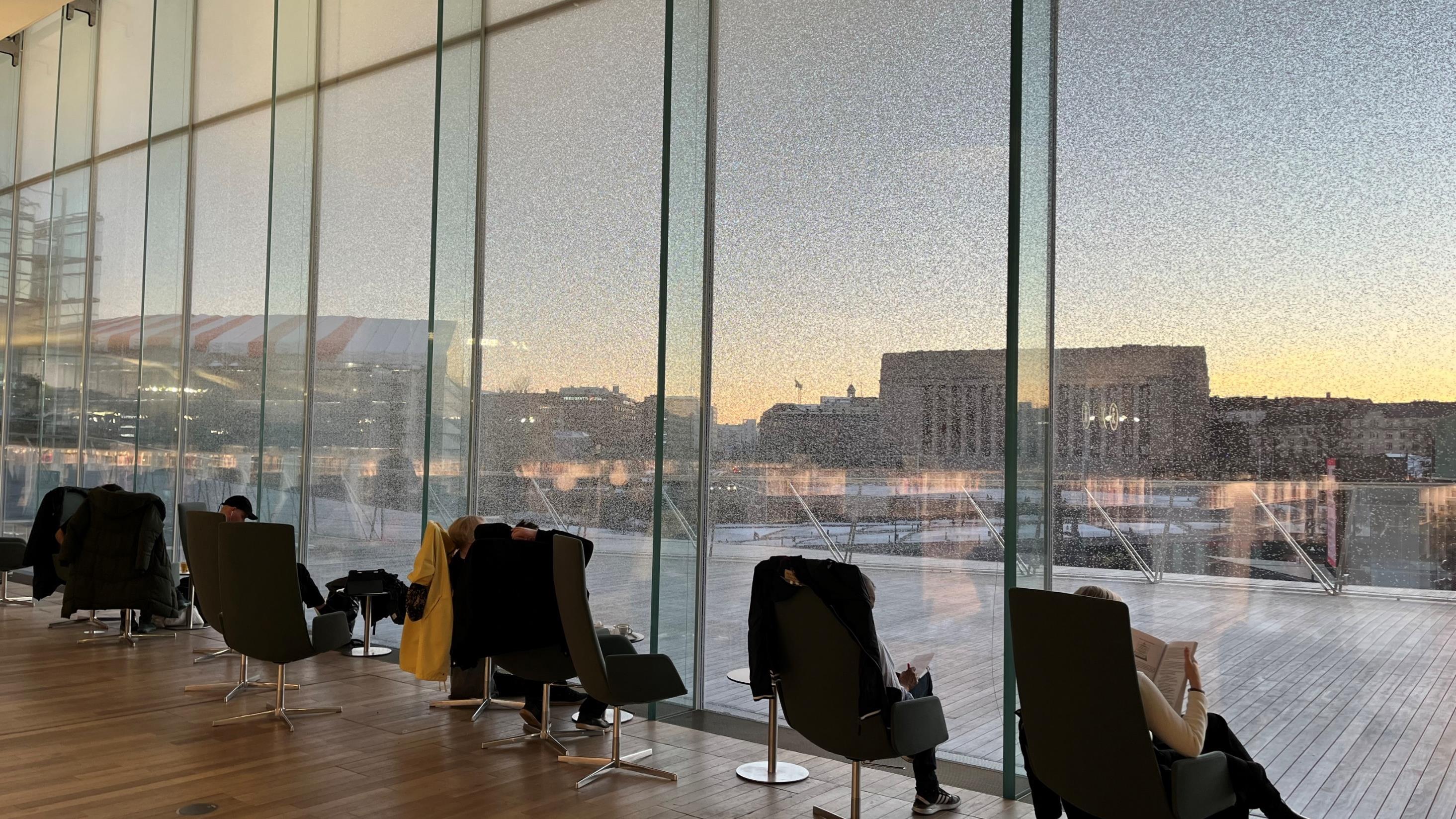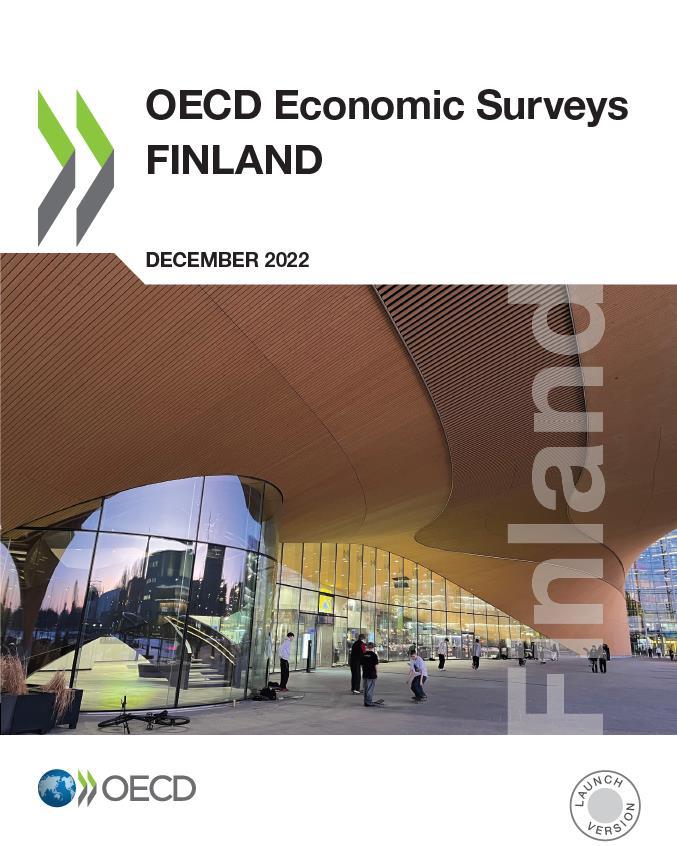OECD ECONOMIC SURVEY OF FINLAND 2022 Towards a Strong and Sustainable Recovery

15 December 2022 Helsinki, Finland

•


15 December 2022 Helsinki, Finland

•
To close the gap in GDP per capita with the other Nordic countries, productivity growth must increase and the employment rate rise, notably for older workers. Addressing the structural shortage of skilled workers through tertiary education and migration reforms is critical for strengthening productivity growth.
• Fiscal consolidation is required to stabilize the government debt-to-GDP ratio in the long run. Regular comprehensive spending reviews would help to identify savings.
• Further measures are needed to improve the efficiency with which Finland’s greenhouse gas emissions abatement objectives are achieved and to increase the forestry and other land-use sink.

Source: OECD Economic Outlook database.

The
recovered quickly from the
but has now slowed
% %

Unemployment rate (lhs) Employment rate (rhs)
Source:
Economic Outlook (database).
Source: OECD staff calculations based on OECD Labour Force Statistics database.

%
Hard-to-fill vacancies as a share of open vacancies (lhs)
Hard-to-fill vacancies (rhs)
10,000 15,000 20,000 25,000 30,000 35,000 40,000 45,000 50,000 55,000 60,000 0
Note: Hard-to-fill vacancies are open job vacancies during the reference period that the employer finds hard to fill. Source: Statistics Finland.




%
1. Cyclically-adjusted net lending, per cent of potential GDP.
Source:
(2022),
Outlook
Structural balance¹ Net lending
(database).

120
100
80
60
40
20

0
140 2021 2030 2040 2050 2060 2070
1. In the reform scenario, improvements in the innovation system increase the level of GDP by 3% over the baseline by 2050 and work-based immigration rises gradually from the current level (1 500 per annum) in 2030 to 7 500 per annum in 2050-70. In addition, fixed capital is assumed to grow faster (at 2% per year throughout the projection) than in the baseline scenario (0.9% per year from 2040 onwards). Higher growth in the fixed capital-to-labour ratio is the main factor increasing growth in labour productivity (to 1.4%) and output (to 1.1%) in the reform scenario.
2. In the MTO scenario, Finland continuously meets its medium-term budgetary objective of a structural financial balance of minus 0.5% of GDP from 2030. Source: OECD.



Note: The ‘with existing measures’ (WEM) scenario includes climate and energy measures implemented by 31 December 2019. Measures approved by the government after 1 January 2020 are included in the ‘with additional measures’ (WAM) scenario. For more details on the two scenarios, see Honkatukia et al., 2021[2].
Source: Honkatukia et al., 2021[2].
Mt CO₂-eq.

Gross GHG emissions targets
Forestry and other land-use targets
Emissions without forestry and other land-use Emissions with forestry and other land-use
Forestry and other land-use
Source: Statistics Finland; Honkatukia et al., 2021[2].



Average annual labour productivity growth, %, 2010-2019
Note: 2020 is excluded to abstract from the impact of the COVID-19 pandemic on the long-run estimates of productivity growth.
Source: OECD (2021), Compendium of productivity Indicators.
(database).

%
50
40

Business-based 10
spending on ICT as share of total business-based R&D spending 20
60 ESP HUNMEX DNK AUS BEL GRCDEU GBR ITA PRT JPN LTU ISL SWE AUT POL CZE NOR IRL USA FIN TUR EST KOR ISR
30
Note: Data refer to 2020 for Chile
Source: OECD (2022), Education at a Glance 2022.


Employment rate of foreign-born workers with high educational attainment as a share of that of the highly educated native-born, 2019
Source: OECD International Migration Database.


Disclaimer: This document, as well as any data and map included herein, are without prejudice to the status of or sovereignty over any territory, to the delimitation of international frontiers and boundaries and to the name of any territory, city or area. The statistical data for Israel are supplied by and under the responsibility of the relevant Israeli authorities. The use of such data by the OECD is without prejudice to the status of the Golan Heights, East Jerusalem and Israeli settlements in the West Bank under the terms of international law.
